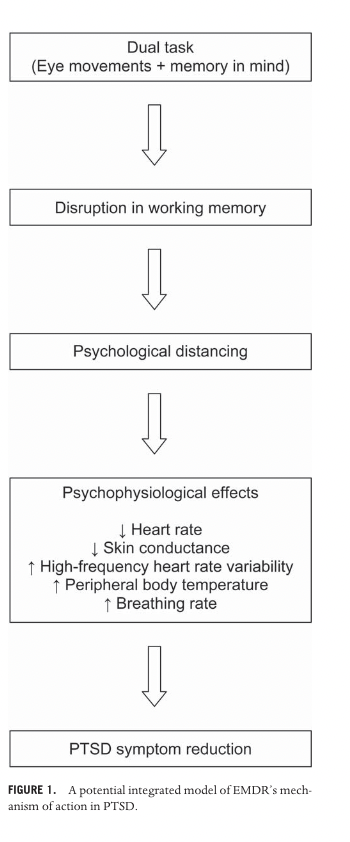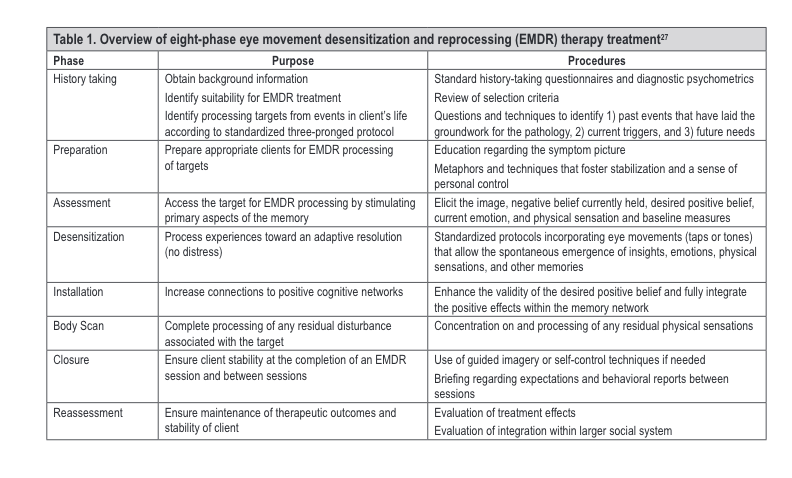EMDR- A Trauma Based Therapy
By Katelyn A. Thickett
April 15th,2022
Memories that continue to come back into the present and affect a person’s ability to live their life can be considered traumatic. At the age of 19, I had a life-changing experience, I had hit rock bottom and began having seizures. My body had hit its maximum threshold of stress and began coping by going into seizures. I have become an advocate for myself but also for others because of my own battle of escaping the chains of abuse that I was in. This motivated me to begin living the life that I had never had the chance to live before. I traveled to Australia, across New Zealand, went bungee jumping, and even went skydiving, but there was something that was consistently still keeping me from living fully without fear. The memories of my past continued to creep up and affect my everyday well-being. This year, I had enough of being triggered, so I made it my goal to find a way to work through my trauma. Deeply, I felt this frustration inside of me because I have been through many types of therapies and therapists but nothing had helped me with my triggers. I have always been anxious and have felt I am walking on eggshells. All I wanted was relief from this exhausting cycle of fear and tension. My brain and body were in a high state of fight or flight response, this was my body’s way of surviving. No matter how much I would try to convince myself that I was safe and did not need to be in a high alert state anymore, my body still continued to be in an extreme state of anxiety. I can remember crying to myself because it almost felt like my body and my brain were disconnected from one another. I felt on edge all of the time and wanted to be able to put these memories to rest. I began researching trauma-based therapies and came across EMDR which has been largely effective for patients who struggled with PTSD. I found a certified EMDR therapist and started weekly sessions in January of this year. This was by far one of the best decisions I ever made for myself!

EMDR Eye-Movement Desensitization Reprocessing therapy, was introduced in 1989 and is one of the two treatments recommended first to PTSD patients by the American Psychiatry Association as well as The World Health Organization. EMDR and trauma-based cognitive therapy are the top two recommended therapies for PTSD. A study shows that EMDR has been proven to be more effective than patients being prescribed fluoxetine, an SSRI is also known as Prozac (Shapiro, 2014). I find this fascinating as I was put on fluoxetine as part of my treatment for my psychogenic non-epileptic seizures. After over 3 years of being on fluoxetine, my trauma response was still there. It was frustrating to have healthcare providers tell me that I am doing so well though despite constantly feeling on edge. Usually, EMDR is suggested for 8 standard 50-minute sessions to greatly decrease symptoms associated with trauma (Gunter & Bodner, 2009). As well, EMDR only involves processing within the session with a certified EMDR therapist whereas CBT involves working outside of sessions to reduce the negative effects trauma causes.
EMDR works by bringing up multiple or single traumatic memories and desensitizing them so the event/s is no longer triggers a patient. Trauma works by forming neural pathways in the brain that end up crossing and affecting other pathways. Neurons communicate together constantly in the brain but with traumatic memories, the neurons may get mixed signals and react or not react to normal stimuli in the way that they should. Oftentimes, trauma victims are known to be on edge and have heightened anxiety and fear caused by the amygdala in the brain (Gunter & Bodner, 2009). EMDR has been shown to reduce the deep gray matter caused within the amygdala which allows the patient some peace from constantly being in a state of high alertness (Gunter & Bodner, 2009). In other studies, EMDR is shown to increase communication between the left and the right hemispheres of the brain which has been linked to a decrease in distress and worry (Gunter & Bodner, 2009). This interaction may also help decrease the distress associated with traumatic memories. The state that EMDR provides is one believed to be similar to REM where the body is able to mimic a relaxed state while bringing up triggering events (Gunter & Bodner, 2009). This is known to decrease the prior parasympathetic tone associated with trauma and allow the body to maintain a steadier heart rate and breathing rate (Gunter & Bodner, 2009. Below is a potential flowchart of how EMDR works to target PTSD patients (Gunter & Bodner, 2009).

During an EMDR session, a certified therapist begins by asking about any feelings the body and the brain have associated with a direct memory. This allows the brain to connect neurons perhaps in explicit memory to connect through a distinct body sensation. By using buzzers and/or directed eye movements, the body’s nervous system becomes distracted by these actions and therefore is put into a more relaxed state. EMDR provides the patient to be flexible with their attention during the session. This distraction of eye movements or holding on to buzzers allows the patient to be less triggered by the memory and it desensitizes the memory (Shapiro, 2014). It allows the patient to feel more in control while experiencing traumatic memories refer below to table 1 (Shapiro, 2012) for an overview of EMDR therapy.

Often, professionals have explained this as a way for the patient to look at something distressing in a detached way. Personally, I think of EMDR as myself watching my past traumatic memories through a fish bowl. I separate myself from being in the horrible memories and sensations and allow myself to just process the memories in a peaceful way.
I found it interesting to find out that there was a small study done on EMDR as the main source of treatment in people having psychogenic non-epileptic seizures. The study shows that they have been seizure-free for over a year (Kelley & Benbadis , 2007). As well, there are a few studies displaying the effects of EMDR as a form of treatment for children with ADHD and depression (Shapiro, 2014). Both these studies fascinate me because I wonder how I would of reacted to EMDR therapy during my childhood. I think it would be interesting to pursue future explorations on if EMDR is a form of treatment for children with ADHD and/or depression or if the children in the study have been through adverse childhood experience(s). I wish I could caution healthcare providers to be more cautious during diagnosing children because I was diagnosed with multiple disorders by the age of 20. In reality, though, the root cause of these disorders as well as my physical ailments have a link to a person who is stuck in a fight or flight response. I think we need to educate one another on the long-lasting effects of trauma, especially on a child who is still developing.
Thank you for reading, my story/ information on EMDR and how it helps people who are struggling from traumatic events and triggers in their own lives.

References
Gunter, R. W., & Bodner, G. E. (2009). EMDR works…But how? Recent progress in the search for treatment mechanisms. Journal of EMDR Practice and Research, 3(3), 161–168. https://doi.org/10.1891/1933-3196.3.3.161
Kelley, S. D., & Benbadis, S. (2007). Eye movement desensitization and reprocessing in the psychological treatment of trauma-based psychogenic non-epileptic seizures. Clinical Psychology & Psychotherapy, 14(2), 135–144. https://doi.org/10.1002/cpp.525
Shapiro F. (2014). The role of eye movement desensitization and reprocessing (EMDR) therapy in medicine: addressing the psychological and physical symptoms stemming from adverse life experiences. The Permanente journal, 18(1), 71–77. https://doi.org/10.7812/TPP/13-098
Shapiro F. EMDR therapy training manual. Watsonville, CA: EMDR Institute; 2012

Leave a Reply